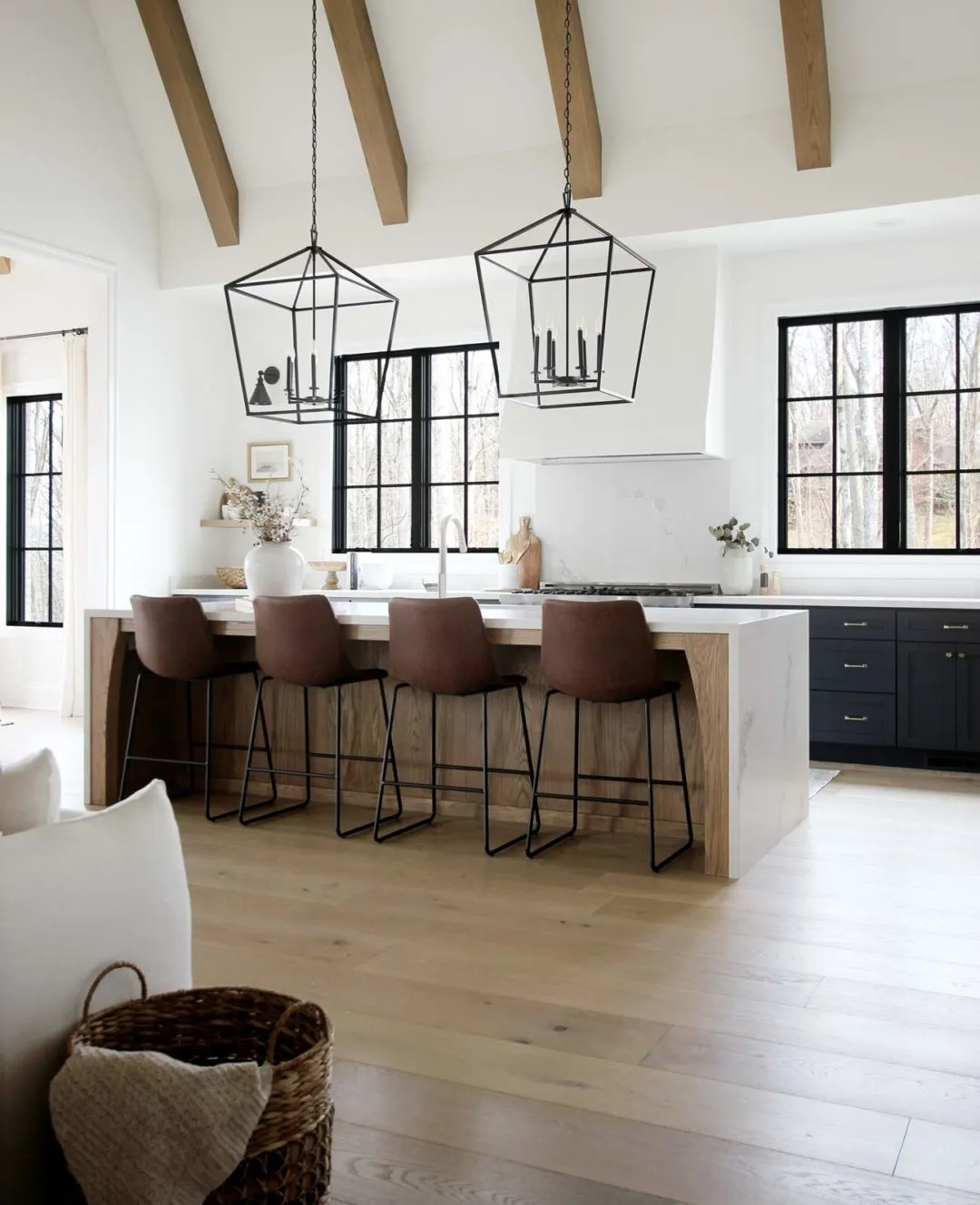Kitchen Island Ideas Top 5 Tips
A kitchen island can be a transformative addition to any kitchen, offering both functional and aesthetic benefits. From providing extra counter space and storage to creating a central hub for cooking and socializing, the right kitchen island can significantly enhance your culinary experience and elevate your home’s overall design. However, with so many kitchen island ideas to consider, it’s important to approach the process with careful planning. This guide will explore the top 5 tips for creating a functional and stylish kitchen island, covering everything from optimizing space to incorporating beautiful decor. By following these suggestions, you’ll be well on your way to designing a kitchen island that meets your needs and reflects your personal style.
Maximize Kitchen Space
Space is often a premium in the kitchen, and a well-designed island can help you make the most of what you have. The key is to think strategically about your kitchen layout and how the island will integrate into the existing flow. Before adding an island, make sure there’s enough space for comfortable movement around it. A general rule is to leave at least 36 inches of clearance on all sides of the island, though 42 inches is preferable, especially in high-traffic areas. This ensures that you can easily move around the kitchen, open cabinet doors, and work comfortably. The design of the island itself will also influence how efficiently it uses space.
Optimize Kitchen Layout
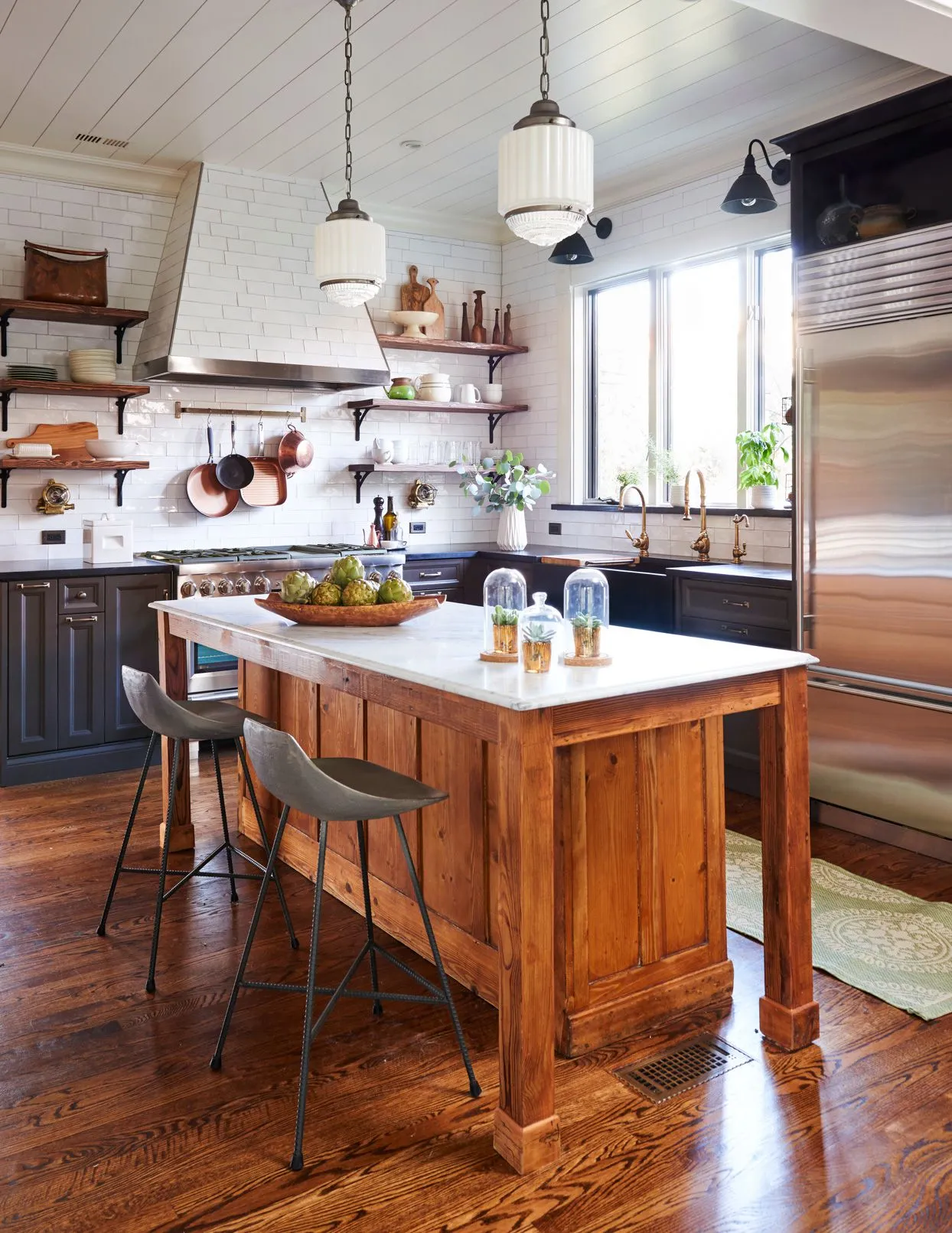
The layout should be optimized for your cooking style and habits. Consider the placement of your sink, cooktop, and refrigerator in relation to the island. Ideally, these should form a work triangle, where you can move efficiently between these primary areas. If you plan to use the island for food preparation, make sure it’s located near the sink and any appliances you use frequently. If you have limited space, a smaller, mobile island can be a great solution. These islands can be moved around as needed and don’t require a permanent installation, offering flexibility in a smaller kitchen.
Choose the Right Island Size
The size of your kitchen island should be proportional to the overall size of your kitchen. A large island in a small kitchen can make the space feel cramped, while a small island in a large kitchen may appear insignificant. The ideal island size depends on how much space you have available and how you plan to use the island. Consider the counter space you need for food preparation, serving, and seating. The length and width of the island should be carefully planned, keeping in mind the clearance requirements mentioned earlier. It’s often helpful to use painter’s tape on the floor to visualize the island’s dimensions before making any final decisions.
Measure Your Kitchen
Accurate measurements are crucial. Measure the length and width of your kitchen, including the placement of doors, windows, and appliances. Then, plan where the island will be placed and measure the available space. Remember to factor in the space needed for people to walk around the island and for doors and drawers to open. Consider how the island will fit into your kitchen’s workflow. Where will you prepare food, store cooking utensils, or eat meals? Making a detailed floor plan can help you visualize the space and ensure that the island fits properly without disrupting traffic flow.
Consider Island Functionality
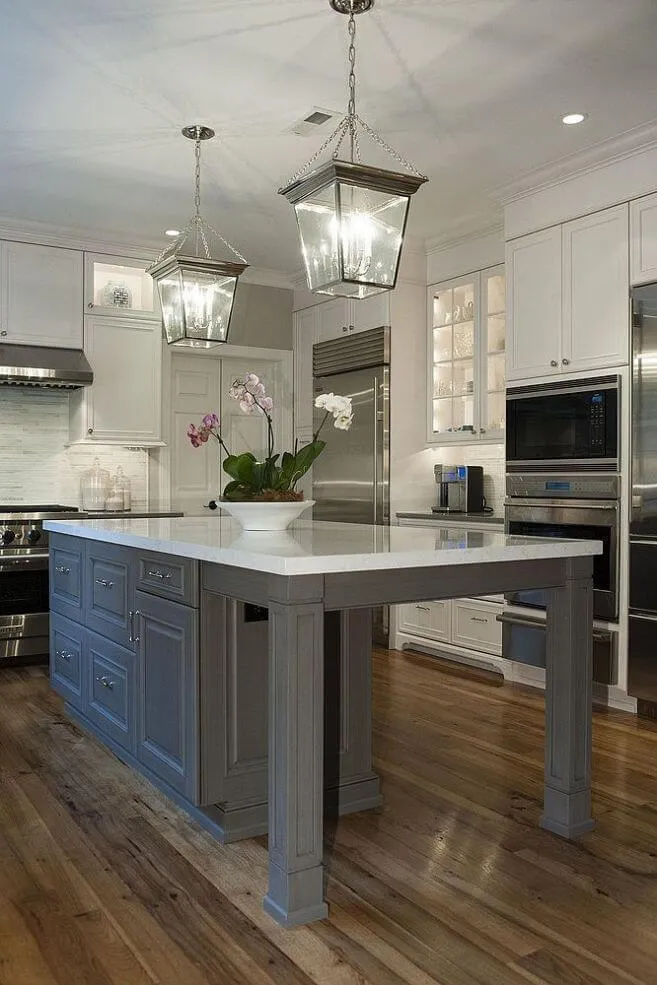
Beyond its aesthetic appeal, a kitchen island should serve a practical purpose. Determine how you intend to use the island regularly. Will it be primarily for food preparation, dining, storage, or all of the above? The intended functionality will heavily influence your design choices, including the incorporation of appliances, seating, and storage solutions. Think about the appliances and features you want to include on your island. Will it house a sink, cooktop, dishwasher, or microwave? Each of these elements will affect the design, requiring electrical and plumbing considerations. The functionality of your kitchen island should cater to your cooking style and needs.
Prep Station
If you love to cook, consider making your island a prep station. This setup provides a dedicated area for chopping vegetables, mixing ingredients, and other food preparation tasks. Include ample counter space, a cutting board, and perhaps a built-in trash can for convenience. The location of the prep station in relation to the sink and cooktop is important for ease of use. Ensure the lighting in this area is bright and focused, making it easier to see what you’re working on. Having essential cooking tools and ingredients nearby can greatly improve the efficiency of your kitchen.
Breakfast Bar
Adding a breakfast bar to your kitchen island creates a casual dining area, perfect for quick meals, snacks, or a morning coffee. Select bar stools that are comfortable and complement the overall design of your kitchen. Consider the overhang of the countertop to ensure comfortable legroom. Make sure you have enough space between the counter and the stools. Consider the material and style of the stools, whether they match your design aesthetic. A breakfast bar can also be a great spot for kids to do homework or for guests to socialize while you cook. Integrate power outlets into the island design to make it convenient for charging phones or using laptops.
Storage Solutions
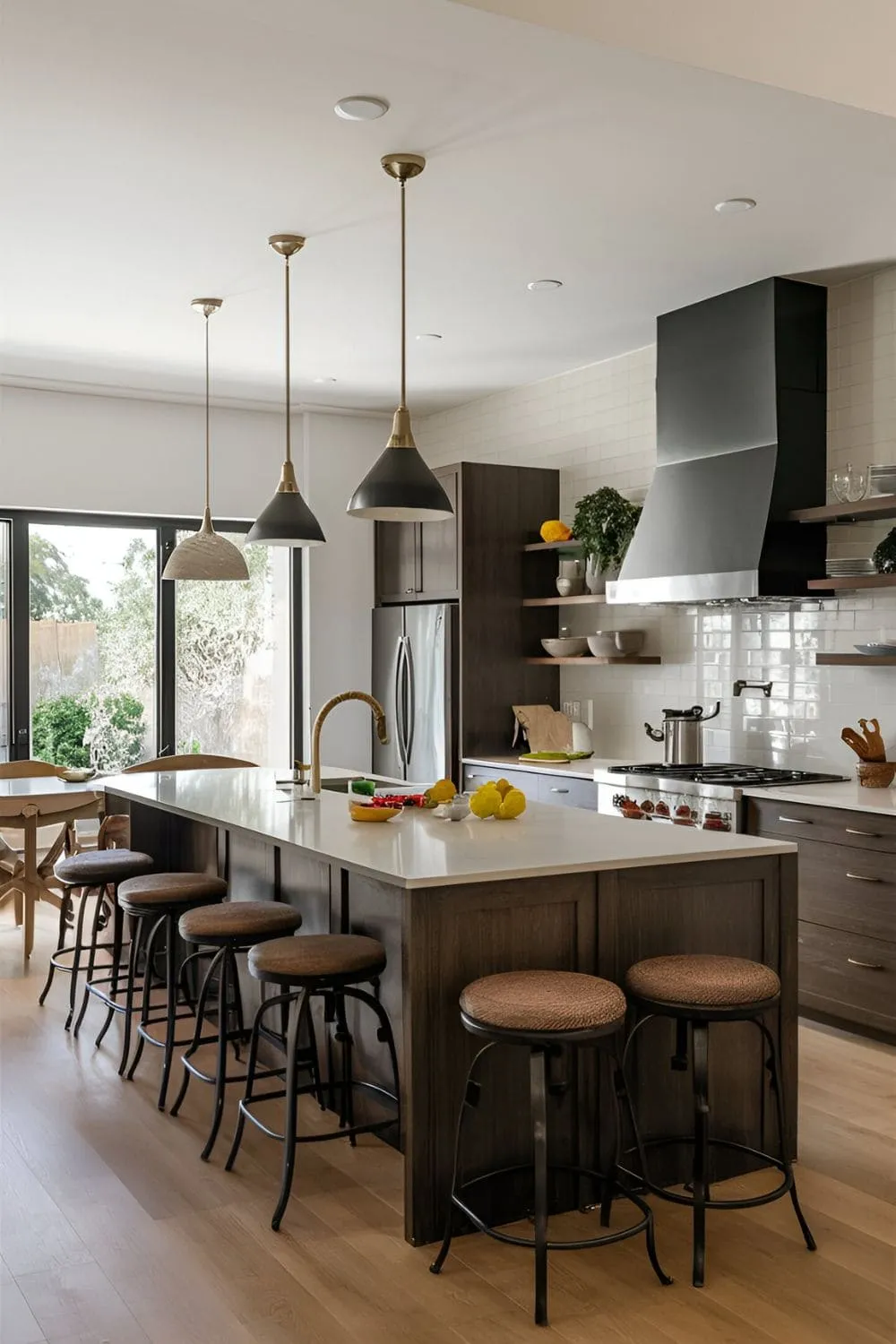
One of the most significant benefits of a kitchen island is the added storage it provides. Maximize your island’s storage capabilities by incorporating a variety of solutions, from cabinets and drawers to open shelving. Choose storage options that are practical and stylish. Think about what you need to store and how you can best organize your items for easy access. The storage solutions should blend seamlessly with the overall design of the island and the kitchen itself. Storage solutions in the island can range from storing pots and pans to having space for your appliances.
Cabinets and Drawers
Cabinets and drawers are the most common types of storage in kitchen islands. Drawers are ideal for storing utensils, cutlery, and smaller items. Cabinets can be used for larger items such as pots and pans, appliances, and even food items. The number and configuration of cabinets and drawers depend on your specific storage needs. Consider using soft-close drawers and cabinets for added convenience and to prevent slamming. Installing pull-out shelves in cabinets makes it easier to access items in the back. Choose cabinet and drawer styles that match your kitchen’s overall design, whether you prefer a modern, traditional, or minimalist look.
Open Shelving
Open shelving on a kitchen island adds a touch of style and provides easy access to frequently used items. Display cookbooks, decorative items, or frequently used dishes. Open shelving can break up the solid surfaces of the island, adding visual interest. However, it also requires careful consideration, as the items on display are always visible. Keep your shelves organized and clutter-free to maintain a clean, stylish look. Use open shelving to showcase beautiful dishware, decorative bowls, or frequently used cookbooks. Consider the material and finish of the shelves, which should complement the island’s overall design.
Select Complementary Design Elements
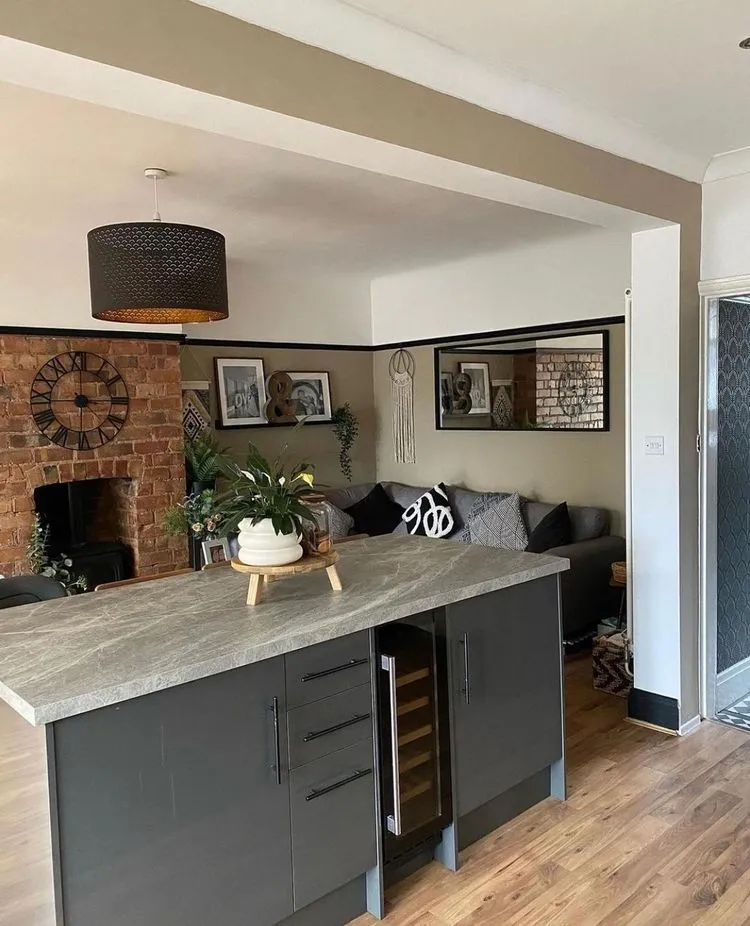
The design elements you choose should work together to create a cohesive and stylish kitchen. This includes the materials, colors, lighting, and fixtures used throughout the space. The island should complement the existing elements in your kitchen, such as cabinets, countertops, and flooring. Choose materials and colors that create a harmonious look. Consider the style of your kitchen and select elements that enhance it. From the countertop material to the cabinet hardware, every detail matters. Consider the material’s durability, maintenance requirements, and aesthetic appeal. Choosing these materials can help your kitchen island to look its best.
Color and Material Coordination
The color and material choices for your kitchen island significantly impact its overall appearance and the mood of your kitchen. Choose colors and materials that complement the existing design of your kitchen. If your kitchen has a neutral color palette, the island can serve as a focal point with a bolder color or unique material. Consider the durability and maintenance requirements of different materials. For countertops, popular options include granite, quartz, and butcher block, each with its own characteristics. Coordinate the cabinet colors with the overall theme of your kitchen, whether it’s modern, traditional, or something else. The use of various materials can add depth to your kitchen.
Lighting and Fixtures
Lighting plays a crucial role in the functionality and aesthetics of your kitchen island. Use a combination of ambient, task, and accent lighting to create a well-lit and visually appealing space. Pendant lights hanging above the island are a popular choice and can add a touch of style, providing focused light for food preparation or dining. Consider the style and finish of the lighting fixtures. They should complement the island and kitchen design. Install dimmers to adjust the lighting levels. Under-cabinet lighting on the island can also add task lighting and ambiance. Make sure the fixtures match your overall design.
Incorporate Island Decor
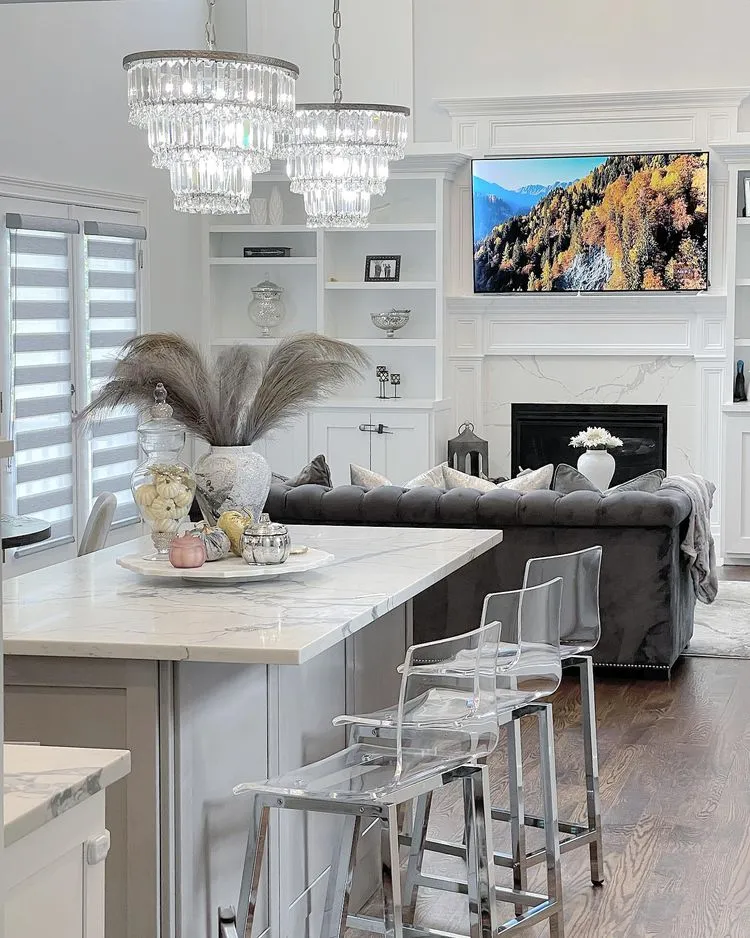
Decorating your kitchen island with the right accessories can add personality and style. Use the island as an opportunity to showcase your design style and make your kitchen feel more like home. The goal is to create a balanced and inviting space that feels both functional and visually appealing. From the style of bar stools to the countertop accessories, every detail should contribute to the overall aesthetic. Use the island to reflect your personality. Use decor to make the kitchen more inviting. You can also select a theme, like minimalist or farmhouse, and decorate your island accordingly.
Accessorize with Purpose
Choose accessories that are both functional and stylish. Display a fruit bowl, a decorative cutting board, or a collection of cookbooks. Make sure that the accessories complement your kitchen’s overall aesthetic. You can also add small appliances like a stand mixer or a coffee maker to the island for added functionality. When decorating, remember to maintain a balance. Too many items can make the island feel cluttered. Prioritize a few well-chosen pieces. Think about adding a vase with fresh flowers or a stylish tray to hold everyday items. A well-placed accessory can transform the look of your kitchen island.
Add Personal Touches
The best kitchen islands reflect the homeowner’s personality and style. Adding personal touches can transform your kitchen from functional to uniquely yours. Consider displaying family photos or artwork on the island. This adds a personal touch and makes the space feel more welcoming. Include items that you love. These could be inherited pieces, travel souvenirs, or handmade crafts. This makes your kitchen island feel lived-in and full of character. Incorporating personal items into your island decor creates a connection and adds warmth to the room. Make your kitchen a space that shows off your personality.
In conclusion, designing the perfect kitchen island involves thoughtful planning and attention to detail. By following these top 5 tips—maximizing space, choosing the right size and functionality, selecting complementary design elements, and incorporating stylish decor—you can create a kitchen island that perfectly suits your needs and elevates your home’s aesthetic. Whether you are looking to enhance your cooking experience, increase storage, or create a social hub, a well-designed kitchen island can be a valuable addition to any kitchen. Remember to consider your individual needs and preferences when making your selections. With the right approach, your kitchen island can become the heart of your home.
